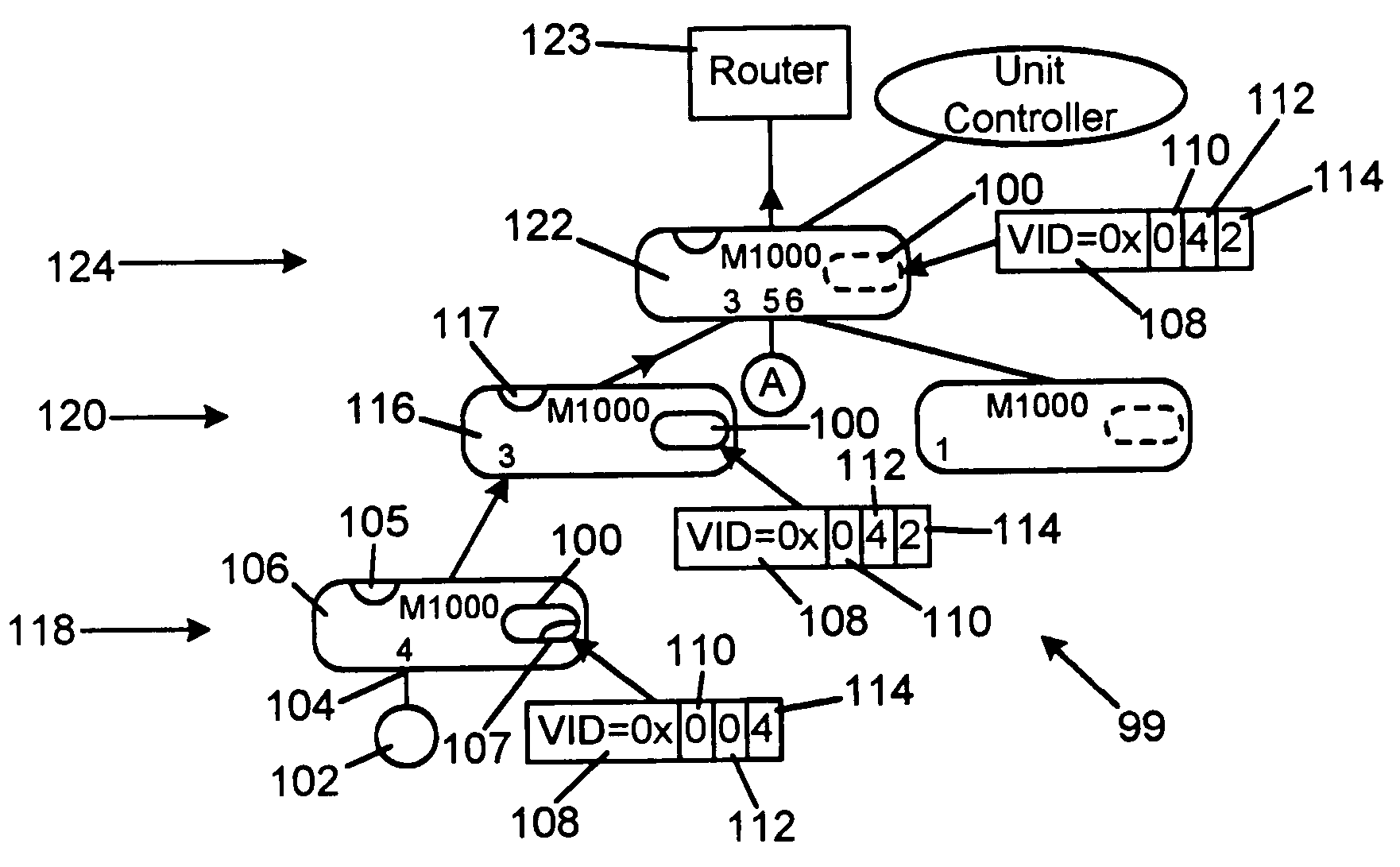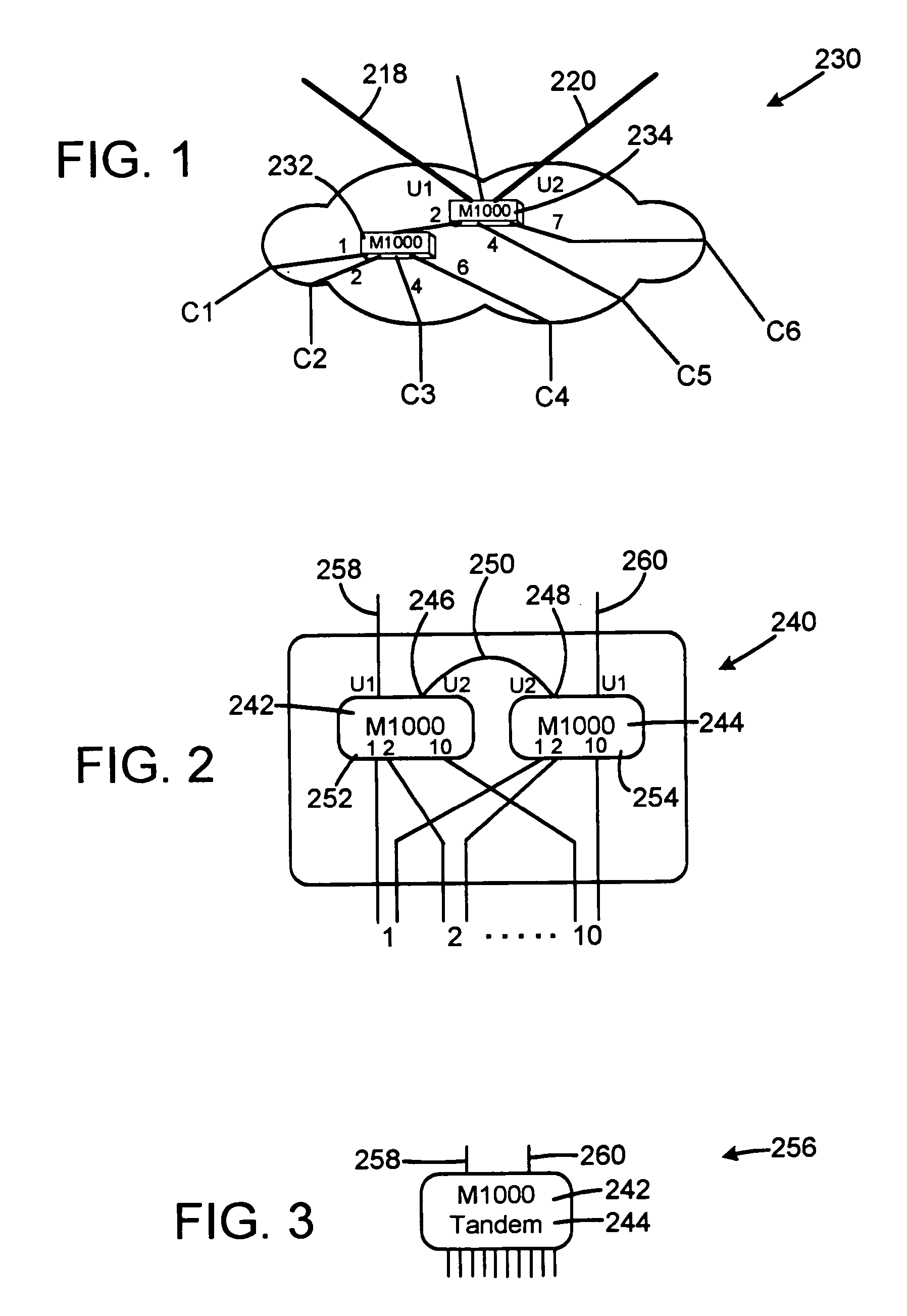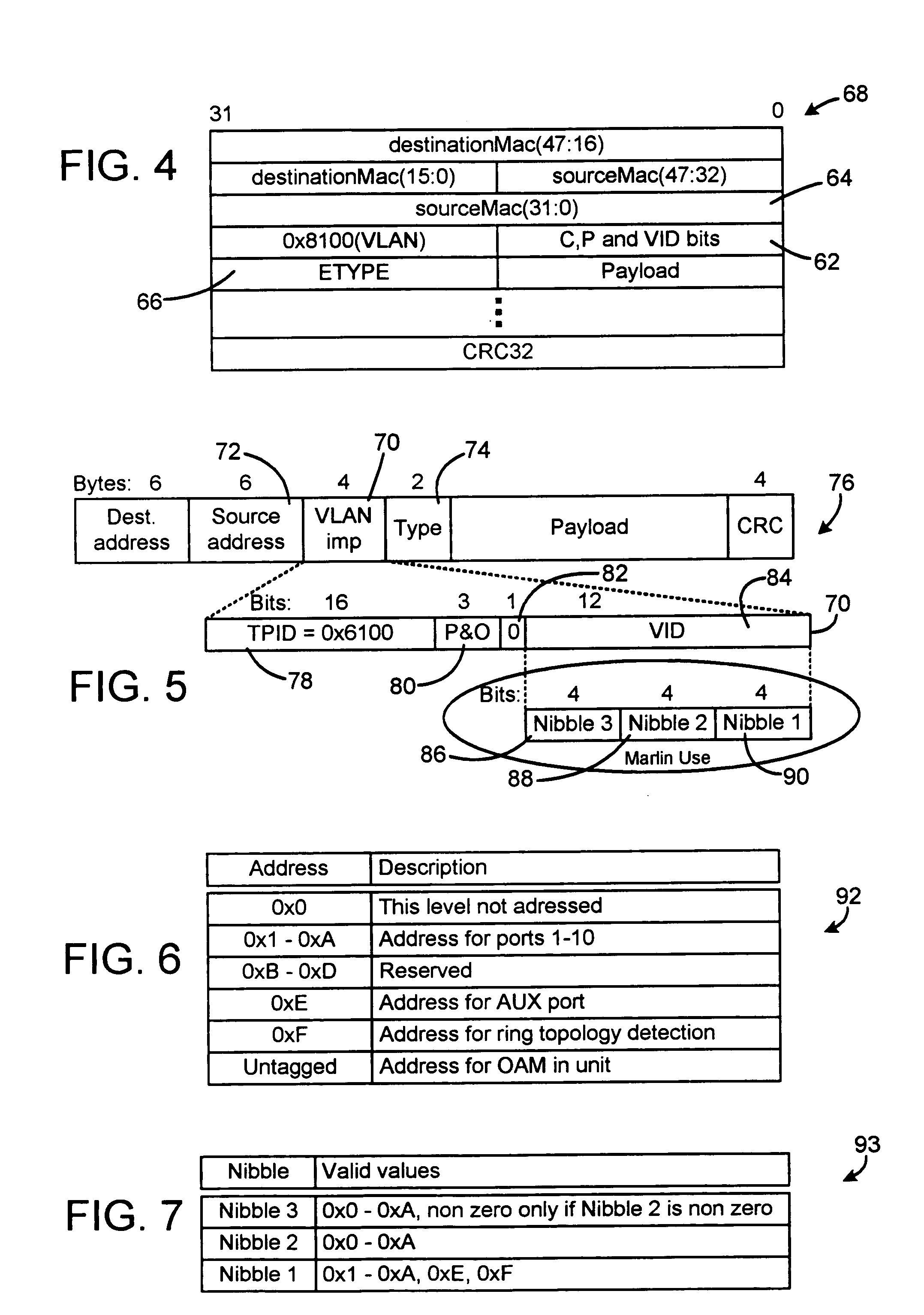Method of sending information through a tree and ring topology of a network system
a network system and information technology, applied in the field of sending information through a tree topology or a ring topology of a network system, can solve the problems of high operational overhead, inability to statistically share capacity, and limited and relatively expensive capacity of tdm circuits, so as to avoid the bottleneck of tdm system, reduce the cost, and improve the effect of efficiency
- Summary
- Abstract
- Description
- Claims
- Application Information
AI Technical Summary
Benefits of technology
Problems solved by technology
Method used
Image
Examples
Embodiment Construction
[0025]In general, the method of the present invention includes steps for sending information up and down a tree topology of nodes in a network. The method also covers the steps of sending information in a ring topology of nodes. The method includes steps of adding a tag and port numbers when the packet moves upwardly in a tree topology towards edge equipment such as a router or a switch, i.e. in an ingress direction, so that each node shifts previous port numbers and adds a port number before forwarding the packet. When the packet moves from a router or switch downwardly in the tree topology, i.e. in an egress direction, each node removes a port number, such as the port number of the departure port, from the tag and shifts the subsequent port numbers within the tag. The invention is not limited to shifting the port numbers between nibbles. It is also possible to merely add and remove port numbers and other identification information from the nibbles without shifting such information...
PUM
 Login to View More
Login to View More Abstract
Description
Claims
Application Information
 Login to View More
Login to View More - R&D
- Intellectual Property
- Life Sciences
- Materials
- Tech Scout
- Unparalleled Data Quality
- Higher Quality Content
- 60% Fewer Hallucinations
Browse by: Latest US Patents, China's latest patents, Technical Efficacy Thesaurus, Application Domain, Technology Topic, Popular Technical Reports.
© 2025 PatSnap. All rights reserved.Legal|Privacy policy|Modern Slavery Act Transparency Statement|Sitemap|About US| Contact US: help@patsnap.com



